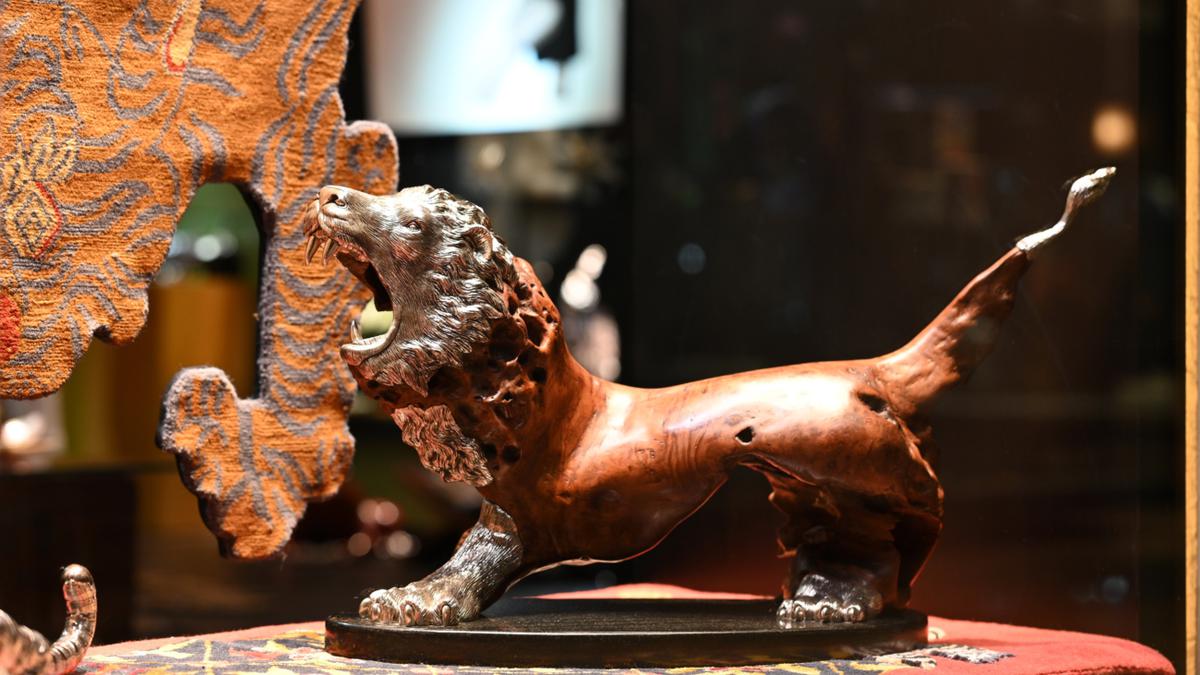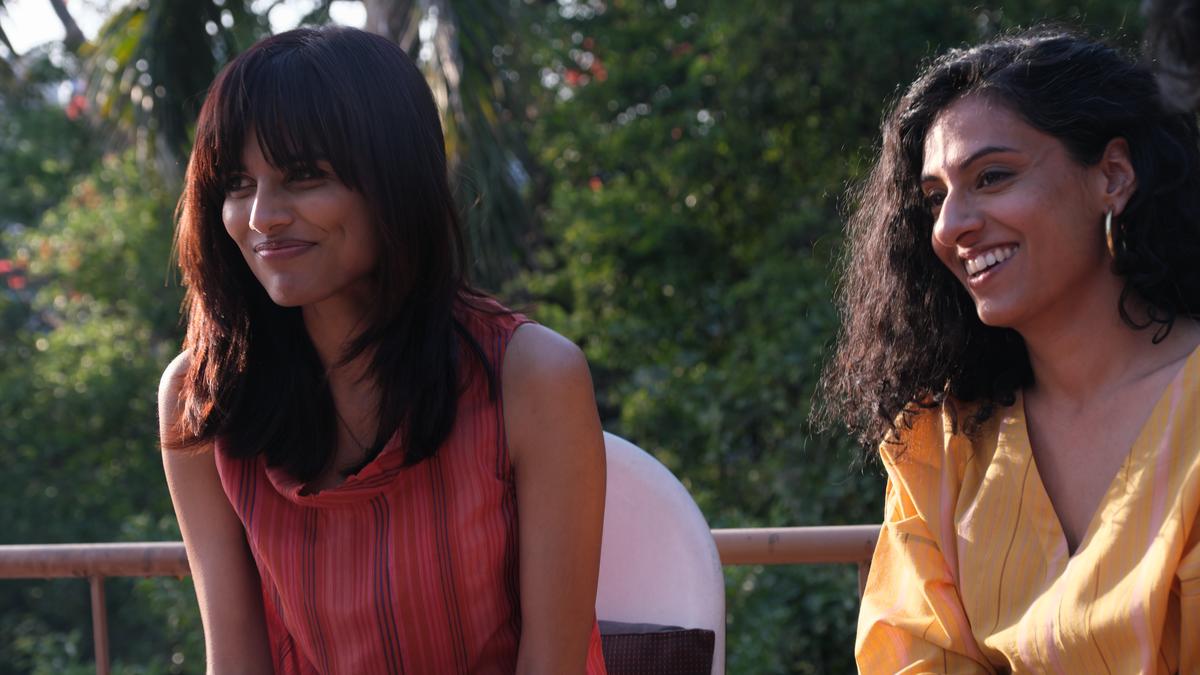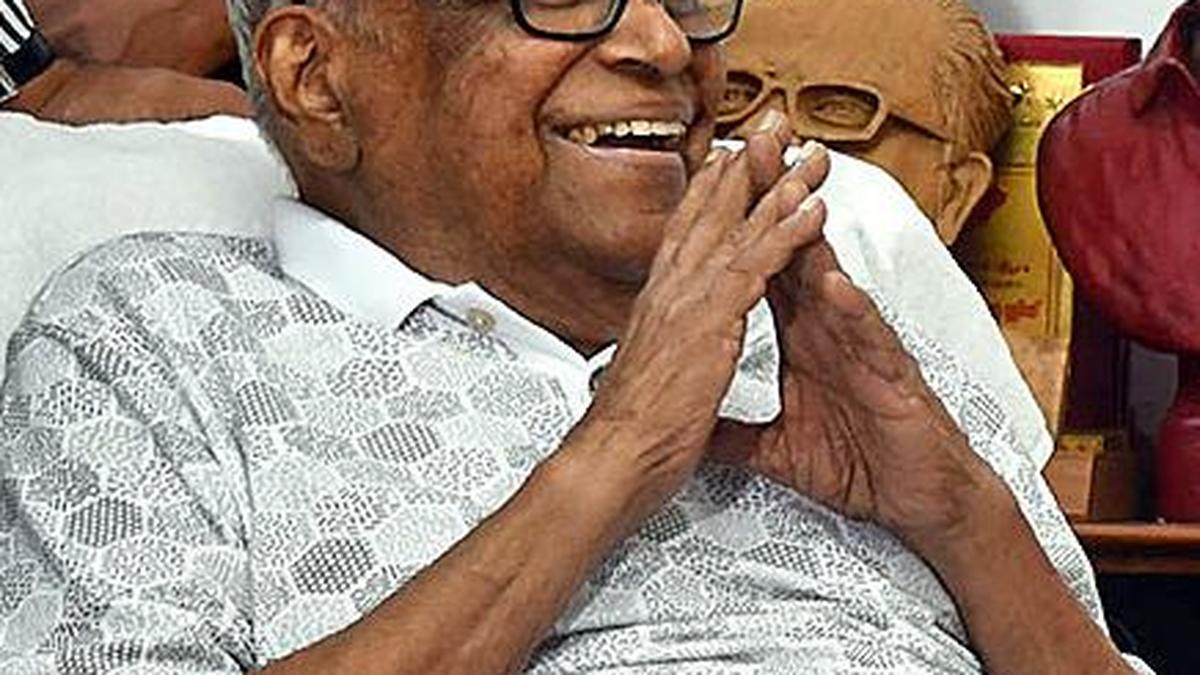The familiar walls of Chennai’s Apparao Galleries are opulent today; a treat to the aesthete’s eye.
Look to the right, and you find a floating alligator of pure sterling silver, its head, torso and tail, each a separate piece. To the left you find an eclectic jewellery set — earrings and necklaces — made entirely with the forewings of naturally expired scarab beetles found in abundance in the tamarind trees of Thailand. Its green-blue metallic sheen traces one’s eyeline: a collector’s piece, no doubt. A lion sculpture made of a sandalwood piece by retaining its natural shape, and completed with sterling silver has unmistakable Asian influences.
At Thailand-based home decor, jewellery and accessories brand Lotus Arts de Vivre’s first-ever solo exhibit in the city, titled Tales of Asia, held in collaboration with Heeramaneck & Son and Apparao, each piece is a collectable as envisioned by the brand’s founder Rolf von Bueren, who immigrated to Thailand from Germany in the 1960s and called the Asian nation home ever since.
Rolf von Bueren with son Nicklas
| Photo Credit:
SPECIAL ARRANGEMENT
It is common knowledge that Rolf is a treasure trove of stories. A well travelled and avid art collector, Rolf’s love for Thailand is anchored by the nation’s impeccable craftsmanship and its appreciation for art. “There is nothing more luxurious than what we cannot have, what seems out of reach” — this realisation is what led to the inception of Lotus.
The von Bueren family’s beginnings were rather humble. After the Second World War, when they emigrated to Thailand from Germany in 1962, they were only armed with appreciation for skilled craftsmanship. It is this aspiration to covet what seems unreachable that slowly led to Lotus, which started as merely a hobby business. The brand owes its success to Thailand’s natural resources, craftsmanship, traditions and customs, and the people of the country.
Over a Zoom call from Bangkok, Rolf says, “The West has contributed very little to civilisation — wine, bread, opera, classical music… While all the good things, like silk, pearls, rubies, come from the East. In medieval times, after the West discovered the route to eastern countries like India, all courts in Europe collected things they didn’t have themselves, like fossilised shark teeth thinking they were claws of dragons. They were called the ‘miraculous chambers of wonders’. This was the basis of all Western museums.”

Scarab cluster earrings with pink tourmaline and diamonds
| Photo Credit:
SPECIAL ARRANGEMENT
Rolf who has been collecting art, jewellery and functional pieces for the past 40 years, doesn’t miss an opportunity to remind the world of Asia’s vast pool of resources, craftsmanship and beautiful art.
He continues, “Thailand has an active and fully funded crafts support system, paid by the royal household. Most of our workers come from that source of education.” The Thais have exceptionally good hands, says the aesthete-turned-businessman. They start with knotting and textile work very early in life, as children. And so, their hands are very nimble. “We are lucky to live among such people for 40 years,” he adds.
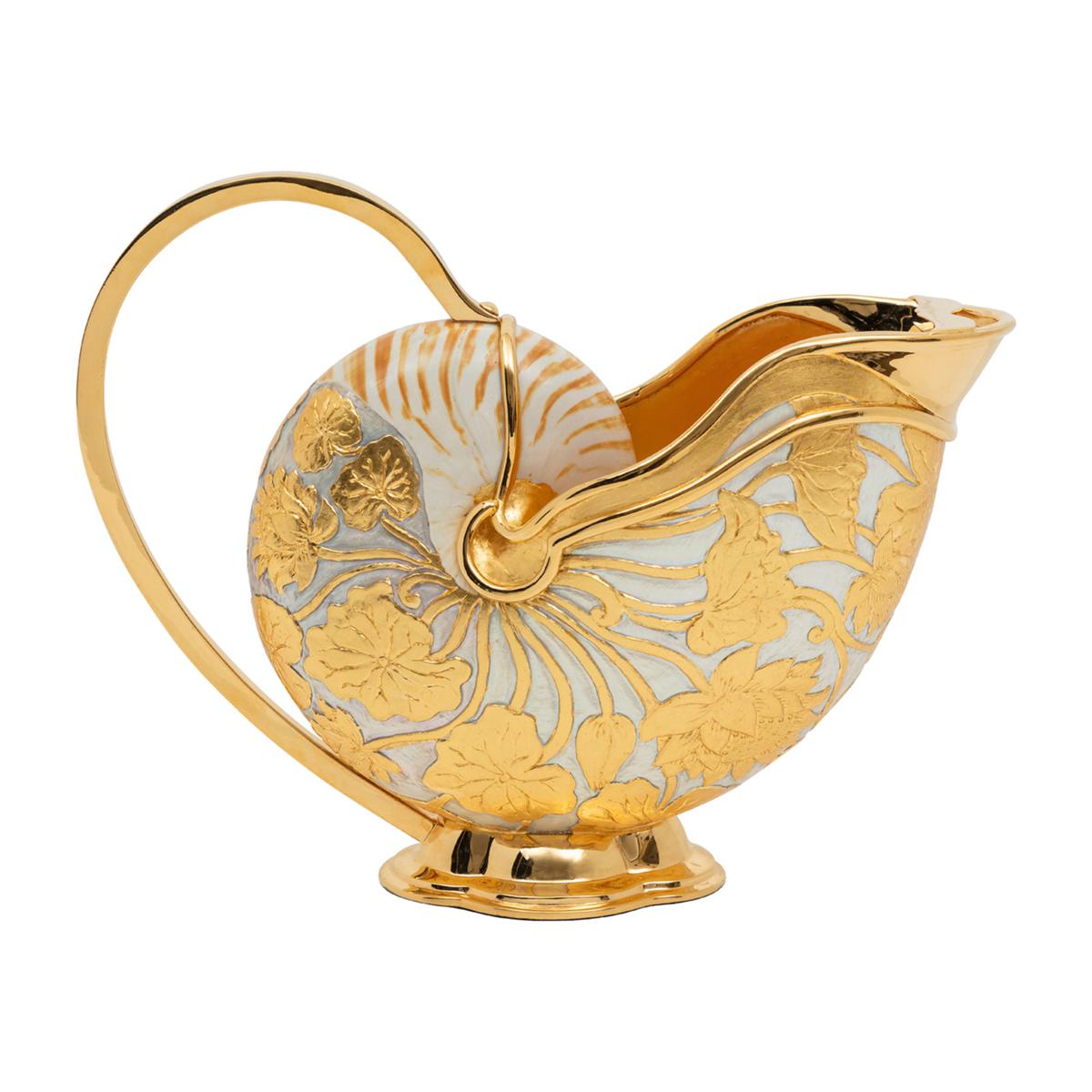
Carved shell gravy bowl
| Photo Credit:
special arrangement
India is not alien to Rolf — he travels in and out frequently in search of the country’s crafts, resources and craftsmanship that often reflects on the brand’s products. He recalls, “Our first ever trip as a married couple was to Kolkata (formerly Calcutta), and there I bought my very first jamawar [silk] and now have a substantial collection of 170 pieces.”
Rolf loves the Indian mind and admits to being “fascinated by anything Indian”. He continues, “There is this Indian spiritual cover all over Asia, it goes as far as Japan and China.” This has greatly inspired some of his collections. Perhaps, the burl wood Happy Monk is a physical manifestation of that.
Later this year, he plans to take an extensive trip to Varanasi to research textile traditions and crafts through visits to factories, like the one that does fabric from peacock feathers sourced from old fans of Hare Krishna travellers.
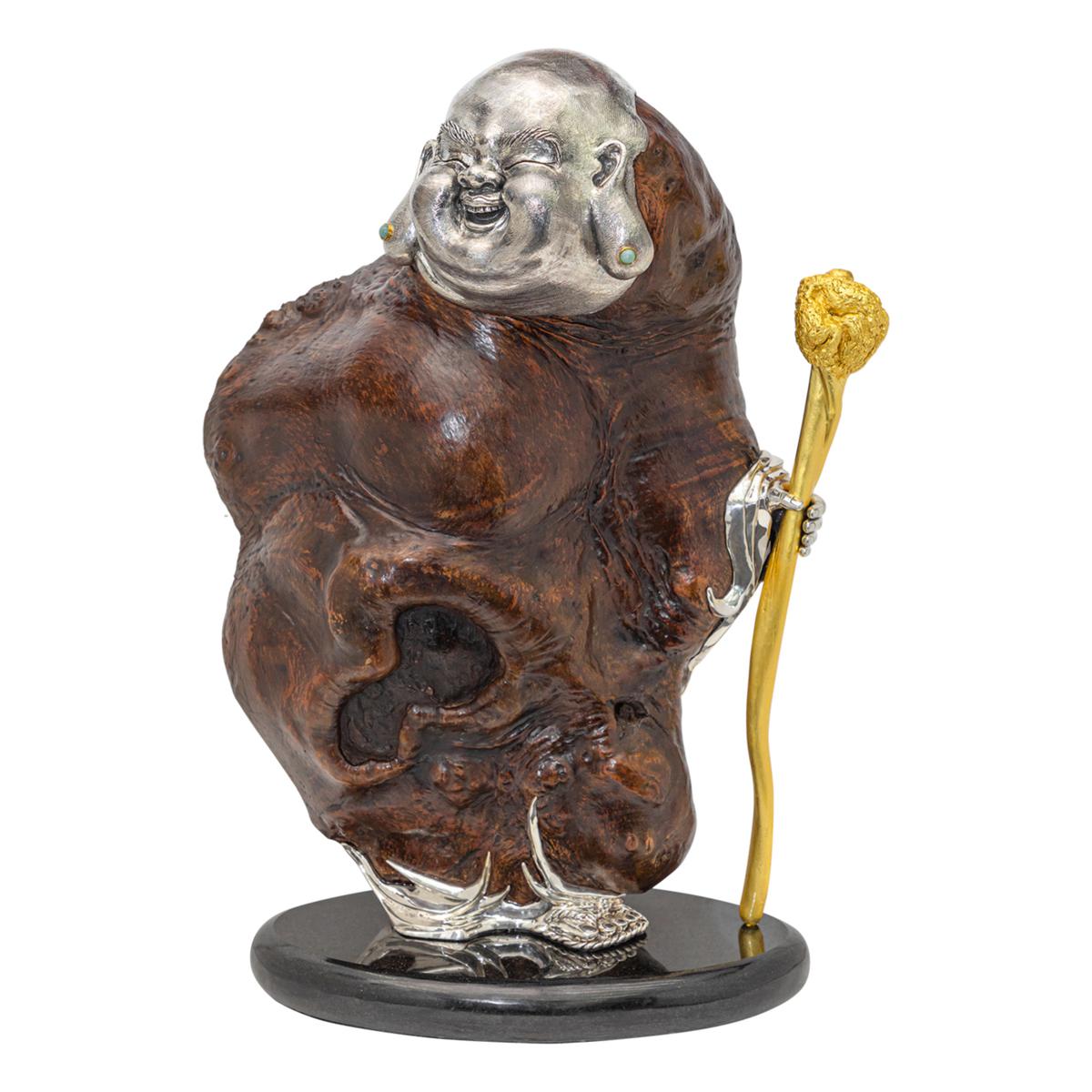
Happy Monk sculpture with walking stick
| Photo Credit:
special arrangement
Ask Rolf, after over 40 years of collecting, what his most-prized possession is, and he is ready with the answer: “My wife, who is Thai, has a seven-kilogram wedding saree from Lucknow that is stitched with emeralds and Basra pearls. These kind of items cannot be measured or put a price on, it’s a memory, a rarity…”
Tales of Asia will be on display till January 31 at Apparao Galleries, Nungambakkam. On January 30, a talk by Deepti Sashidharan on jewellery in museums across India will be held at 4pm.


